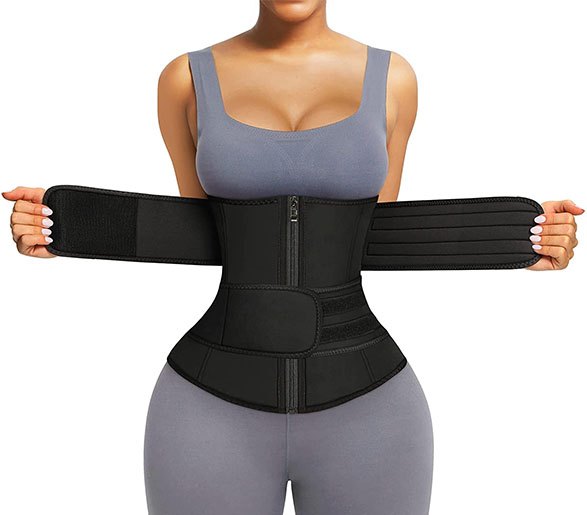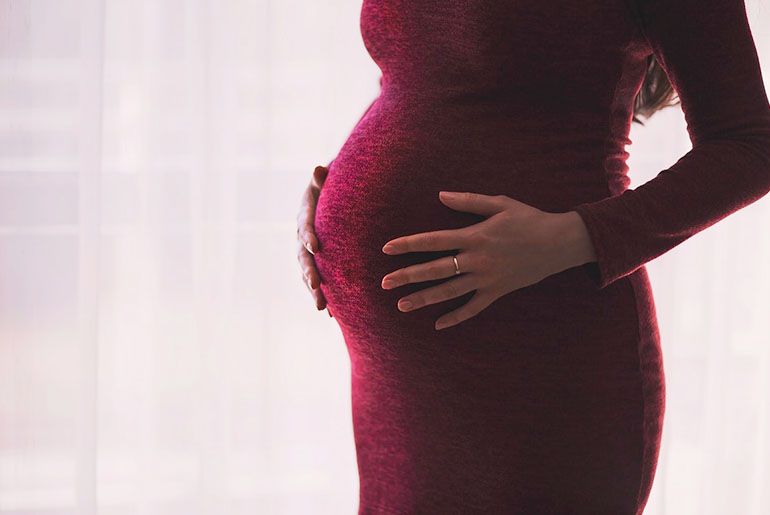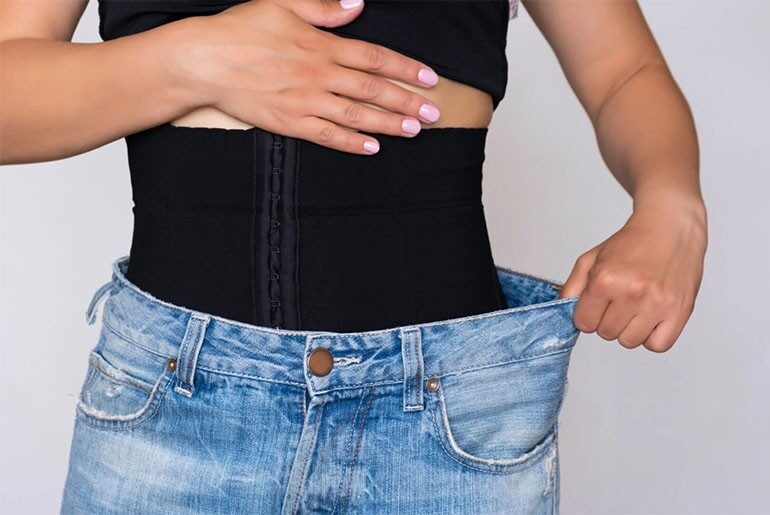Disclaimer: There are affiliate links in this post. At no cost to you, I get commissions for purchases made through these links.
You’re going to attend an important event and want to look gorgeous and smooth despite being pregnant. You can wonder about a waist trainer that may come to your head as a dream solution.
But can you wear a waist trainer while pregnant? Is it safe to wear constricting and tight shapewear when carrying a baby?
It depends on the type and size of the garment. If your waist trainer squeezes and leaves no room for the child, it may be uncomfortable and cause birth complications.
Below, we’ll give a detailed answer to these questions and tell you what you should and shouldn’t wear during pregnancy.
Are Regular Shapewear, Maternity Shapewear, Corset, and Waist Trainer The Same Thing?
Many people have trouble distinguishing between waist trainers, corsets, regular shapewear, and maternity shapewear, while some may even think they’re the same.
Indeed, they’re different. While you may consider waist trainers somehow similar to shapewear, corsets aren’t.

Corsets
Genuine corsets are exclusive garments designed to form a narrower shape of a woman’s bust, hip, and waist and gradually diminish the size.
Plastic, metal, or wooden busks are often the stiffening strips of the best corsets, requiring superior strength to stabilize the lace that tightens in the garment’s back.
Corsets usually serve as a staple to accentuate femininity with such hard busk materials, though they’re notoriously renowned for extreme discomfort.
These garments are for forceful body modification- they force your waist, hip, and bust to fit in a tight space.
Waist Trainers
The same doesn’t go for waist trainers. Today, waist trainers mostly use flexible, soft materials like neoprene or latex. If they come with bones, these are also highly flexible.
Not until corsets failed to remain trendy due to health concerns and discomfort did the idealized minute waist size stops growing smaller.
Most waist trainers on today’s market are comfortable enough to hold your body in the right place and wear throughout the day, even when working out.
Regular Shapewear
Regular shapewear is more like a general idea about all types of girdles women put on to help smoothen bumps and lumps.
No girl, either fit or skinny, wants to wear a bodysuit or gorgeous dress and notice unflattering, uneven, or not smooth somewhere on their body.
Regular shapewear comes in place to help women be more confident with their favorite form-fitting outfits.
Maternity Shapewear
The difference between regular and maternity shapewear is that maternity one provides more room for the belly.
Shapewear for pregnant women (the most popular brand in which is Spanx) typically uses the standard compression-shaping technology for the legs, bottom, and hips but includes a wire panel that gives the abdomen gentle support.
This garment applies to moms-to-be the most since it doesn’t stress any compression on their belly and squeeze their babies.
Plus, maternity shapewear hits the spot if you want some gentle compression on the belly to support your body yet still feel comfortable.
In a word, these products are tailor-made with pregnant women’s bodies and comfort in mind.
Is It Safe to Wear A Waist Trainer While Pregnant?
Whether it’s safe to wear a girdle during pregnancy depends on what type and size you choose. However, wearing a waist trainer while pregnant is not recommended. Because waist trainers are too tight and put excessive pressure on multiple body areas which can possibly cause miscarriage and affects your health.
Apart from creating extreme discomfort, constricting girdles could induce pain in various parts, mainly the abdominal region, yeast infections, heartburn, and decreased blood circulation.
Should you feel uncomfortable, painful, or have difficulty breathing when wearing a girdle, the red flags indicate that the staple is too tight.

Do’s
Pick a larger size
Many moms-to-be have witnessed positive results after wearing more forgiving, elastic, and looser staples, like bone-free neoprene cinchers in large sizes and exclusively designed maternity garments.
Choose girdles with a slightly larger size than usual, extra support for your lower abdominal region where your baby’s in, and minimal compression on the waist.
Go for only elastic materials. Neoprene, Lycra, spandex, and latex are all excellent options.
If the undergarment is too tight, remove or loosen it immediately. Rocking shapewear should support your body instead of sizing it down.
Go for Specialized Maternity Shapewear
If you’re unsure which girdles to choose during pregnancy, the best idea is to go for specialized maternity shapewear, which is born to meet pregnant women’s needs.
Those tube-like control undergarments are more like belly bands. You wear them around the growing abdomen, and they function for two purposes.
First, they prolong your pre-pregnancy dresses or pants’ lifespan by covering unbuttoned or unzipped trousers. Second, your belly and back will receive gentle support since they adjust to the size changes.
Alternatively, you can consider buying maternity over-the-bump shapewear leggings that function pretty similarly.

Don’ts
Choose High-compression Garments
For the sake of comfort, it’s advisable to steer clear of girdles with super high compression.
Your body changes a lot and gets bigger during this time, and excessive stress and high compression can make it feel uncomfortable.
With medium to light control, you can visually get rid of any bump and appear sleeker without extreme discomfort.
Wear Corsets
It stands to reason that fetal health experts and doctors keep emphasizing that pregnant women must not wear too tight clothing during this period. Even if tight clothing may not squeeze the baby, it will certainly cause pain and discomfort. A corset, unfortunately, falls within this category.
Corsets induce changes in your bathroom and digestion schedule and might lead to nausea or dizziness while carrying a baby. You could experience vomiting, shortness of breath, increased urination, acid reflux, and bloating in worse cases.
A slim, smooth so-called appearance is not worth all these issues. Remember that your child’s health and life are the most imperative.
Wear Waist Trainers
It’s not always the case, but wearing waist trainers while pregnant is usually a ‘no-no.’
Maternity clothing should not overly squish and compress internal organs, such as your intestines, spleen, liver, abdominal muscles, and ribs – a waist trainer does almost all of these.
If you tie it up too firmly, it could impact your posture, restrict abdominal muscles and breathing capacity, limit your gesture and mobility, and induce rib fractures. Even when it may not affect your fetus, it may harm you! Thus, it’s better to keep away from these garments during pregnancy.
However, if you wish to wear a Spanx waist training girdle to have a fancy look for a luxury event and find that wearing one doesn’t hurt and squish your body or skin, then it’s OK from time to time.
And most importantly, keep in mind that the key is moderation, and always consult your doctor’s advice before putting on anything constricting.

How Long Can You Wear Shapewear While Pregnant?
Actually, you can wear a girdle right after you know you’re pregnant. Regular shapewear is safe to use during the two first trimesters, provided you don’t wear it too often or tightly.
In the last trimester, maternity shapewear is the go-to option if you need to show up beautiful and smooth.
You can use the suitable garment all day long as long as you feel comfortable and can move easily. If the clothing focuses on your butt, thighs, and other body parts instead of the abdomen, it’s the right choice.
But if you find it hard to breathe or feel light-headed, remove or loosen the girdle right away.
FAQs
Apart from the topical questions, we attempt to refer to some common confusions about maternity girdles and clothes.
How Do I Know If My Shapewear Is Too Tight?
Anyone who wears too-tight shapewear for an hour or more knows it will be challenging to breathe deeply or even eat a normal-sized meal.
A waist trainer’s warning signs that are too tight or snug are deprivation of breath, reduced oxygen supply, dizziness, and lightheadedness.
No matter what type of girdle you pick, you should not have to use much force to fit your body into the material. If that’s the case, it is probably snug for you.
Plus, the garment should not expose bulges below clothing, or else it may be too tight or too big and won’t work effectively.
Maternity Shapewear Vs. Compression Clothing
Are compression clothing and maternity shapewear the same thing? Yes and no.
Most maternity girdles will smoothen your figure underneath your charming dress, prevent excessive sweating and thigh chafing, and provide comfort. Meanwhile, compression clothing, such as leggings and socks, offers medical benefits during pregnancy.
If you intend to travel on vacation, particularly on a flight or road trip that is more than 3-4 hours long, your doctor may advise you to use leggings or compression socks. That’s because you’re vulnerable to DVT (deep vein thrombosis) – occurring when a thrombus (blood clot) forms in your lower legs and moves to the lungs.
When you sit for an extended time, it might increase DVT risk. Compression leggings or socks will help deter these thromboses from forming.
Remember to always check with your midwife before traveling to gauge the best solution for you.
Note that the garment you’re wearing is probably not the same as genuine compression leggings.
Do You Buy Maternity Clothes In Your Normal Size?
Maternity clothes’ sizes work similarly to regular ones, meaning that your maternity clothes have the same sizes as your regular ones.
The same also goes for bra sizing, but please note that your breasts will grow during pregnancy, so your regular brassiere 90% will change.
It’s also a good idea to expand your usual bras using a bra extender, giving them a new life for more than nine months.
Conclusion
In short, wearing a waist trainer or shapewear while pregnant should not be a considerable problem. It can even bring some figure-related benefits, provided you know which product is and is not right for you.
The key, after all, is to understand and listen to your body, give it time to be ready for changes, and prioritize safety and health.



